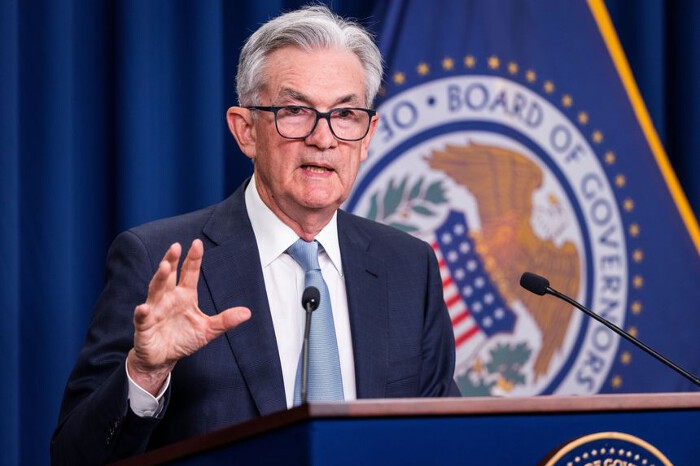Will the US dollar fall as rates are cut?
It is probably a common narrative in the market that, just as the dollar rose with the increase in US policy rates, so the dollar will fall as rates are cut.

FED may cut rates in 2024
>> Prospects for central banks’ monetary policy
Of course, it is not as simple as that. For one thing, could there be a sort of “sell the rumour, buy the fact” reaction as US dollar weakness in anticipation of easier Fed policy is replaced by strength as rates start to fall.
The Standard Bank’s sense is that the FX market is primed and ready to spring into action, to sell the US dollar, when the Fed starts to ease policy. Of course, this could be some time off; the market is currently priced for cuts to start around mid-2024. But the start of rate cuts is not necessarily the point of maximum vulnerability for the US dollar. That comes earlier as the Fed starts to lay the groundwork for rate cuts, via subtle changes to the wording of its post-meeting statements, and the comments of FOMC members. These changes are likely to occur a meeting, or two, before the first cut.
Hence, if everything goes to plan in terms of continued falls in inflation and an easing of labour market tightness, we could be looking for rate-cut speculation to fire up in Q2 next year. Could this be the point of maximum dollar vulnerability? Possibly. However, there will also be many that anticipate such a change in the Fed’s policy narrative and this could pull dollar vulnerability into Q1 next year. But is there a danger that all this speculation of Fed easing and pre-emptive dollar weakness turns into a trap? That, by the time the first rate cuts occur, the dollar is already past its worst, with the rest of the easing cycle seeing dollar strength as this ‘sell the rumour, buy the fact’ type of mentality endures?
“It is possible but we believe that dollar weakness will endure through a good part of the easing cycle. To see this, it is worth remembering that, while short-term speculation in the FX market, of the sort we’ve talked about already, is an important component of price movement, it is not the major part. For however short-term speculative players in the FX market position themselves around the start of a Fed easing cycle, there will be reverberations for longer-term investors that both endure and only kick-in once rates cuts are delivered”, said Mr. Steve Barrow, Head of Standard Bank G10 Strategy.
The best way to see this is to consider what has been happening to dollar/yen. Right now, high US bond yields relative to JGBs would seem to make treasuries attractive to Japanese investors. However, this is only on an unhedged currency basis because high US policy rates compared to Japan are leading to such elevated hedging costs that JGB yields are higher than US treasury yields once FX hedging is accounted for.
>> Will ECB cut rates before the FED?
Hence, those wanting to hold treasuries are forced into unhedged positions and, in transacting purchases of treasuries through the spot or forward FX market, not the swap market, the impact on dollar/yen is significant as the rally we’ve seen in dollar/yen since the Fed started tightening shows. Similarly, for Japanese investors looking to buy other asset in the US, such as stocks, the high hedging costs created by elevated US policy rates leads these investors to err more towards unhedged purchases. But this will start to change as US policy is eased, particularly when it comes to the yen, as Japanese policy rates are more likely to rise than fall.
The more the Fed eases, the more previously unhedged Japanese purchasers of treasuries and other US assets will shift to hedged positions, and this will reduce the spot demand for dollar/yen. On the flipside, of course, US investors looking at Japanese purchases will be pushed towards leaving their purchases unhedged, which implies spot and forward sales of dollar/yen. Of course, much is going to depend on just how far the Fed cuts, whether the BoJ tightens and whether investors have a healthy appetite for overseas assets.
Mr. Steve Barrow believes that all these things will be consistent with US dollar weakness; not just as some temporary speculative move before the Fed gets going on rate cuts, but as a more durable depreciation as the cuts start to impact hedging decisions.








